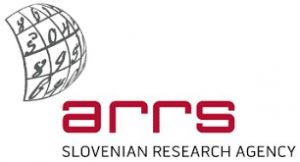Data driven structural behaviour modelling in civil engineering – DataBridge
| Project title: | Data driven structural behaviour modelling in civil engineering – DataBridge |
| Project team UL:: | Boštjan Brank, Blaž Kurent, Marko Lavrenčič, Luka Gradišar, Nina Kumer, Luka Trček, Tomislav Franković, Tomo Vedlin, Simon Dettelbach (all from UL FGG), Uroš Bohinc, Andrej Anžlin, Maja Kreslin, Jan Kalin (all from ZAG), Andras Benczur, Noemi Friedman, Andras Urbanics, Dora M Phillip, Zeynep Tasci, Rita Aleksziev (all from SZTAKI) |
| Duration: | From 1 November 2020 until 30 October 2023 |
| Project code: | J2-2490 |
| Lead partner | University of Ljubljana, Faculty of Civil and Geodetic Engineering |
| Project leader at UL: | Prof. Boštjan Brank, UL FGG |
| Partners: |
Slovenian National Building and Civil Engineering Institute (ZAG) Institute for Computer Science and Control (SZTAKI) – Informatics Laboratory, Budapest
|
| Source of finance: |
Slovenian Research Agency
|
| Key words: | Civil engineering structures, data-driven modelling, finite element modelling, Bayesian finite element model updating, uncertainty quantification, surrogate models, artificial intelligence, structural health monitoring, in-situ vibration tests |
Description
The research topics of the project are: (a) Bayesian finite element model updating and uncertainty quantification for large civil engineering structures under service loadings, (b) application of artificial intelligence tools for analysing structural health monitoring data, (c) construction of proxy models for larger civil engineering structures, and (d) designing efficient in-situ vibration tests.
Main goals
To apply artificial intelligence tools for analysis of structural health monitoring data in order to find a suitable damage indicator. To apply Bayesian inference and uncertainty quantification for identification of (dynamic) characteristics of large buildings and bridges.
Project work packages:
- Project management (lead partner UL FGG)
- Experiments (lead partner ZAG)
- Pre-processing of data and data analysis by artificial intelligence tools (lead partner SZTAKI)
- Stochastic modelling and updating (lead partners UL FGG and SZTAKI)
Project results:
KURENT, Blaž, FRIEDMAN, Noemi, AO, Wai Kei in BRANK, Boštjan, 2022, Bayesian updating of tall timber building model using modal data. Engineering structures [na spletu]. 2022. Vol. 266, no. 114570.
KUMER, Nina, KRESLIN, Maja, BOHINC, Uroš in BRANK, Boštjan, 2021, Numerična ocena dinamičnih karakteristik viadukta Ravbarkomanda. Gradbeni vestnik. glasilo Zveze društev gradbenih inženirjev in tehnikov Slovenije [na spletu]. 2021. Vol. 70, p. 272–281.
Kurent, Blaž, Friedman, Noemi, Brank, Boštjan, 2021, On (bayesian) finite element model updating of civil engineering structures by using modal features, ECCOMAS 2021 (Str. 9-11).
Bohinc, Uroš, Računski model za opis temperaturnega vpliva na meritve deformacij = Numerical model of temperature influence on deformation measurements, Gradbeni vestnik : glasilo Zveze društev gradbenih inženirjev in tehnikov Slovenije. – ISSN 0017-2774 (Letn. 71, okt. 2022, str. 254-260)
Jan Kalin, Aleš Žnidarič, Andrej Anžlin, Maja Kreslin, Measurements of bridge dynamic amplification factor using bridge weigh-in-motion data, Structure and infrastructure engineering. – ISSN 1573-2479 (Vol. 18, iss. 8, 2022, str. 1164-1176).
Hekić, Doron, Anžlin, Andrej, Kreslin, Maja, Kalin, Jan, Žnidarič, Aleš, Using B-WIM system-generated performance indicators to support model updating of a multi-span viaduct, Bridge safety, maintenance, management, life-cycle, resilience and sustainability [Elektronski vir] : proceedings of the Eleventh International Conference on Bridge Maintenance, Safety and Management (IABMAS 2022), Barcelona, Spain, July 11-15, 2022 (Str. 1287-1293).
PAPINUTTI, Mitja, ČETINA, Matjaž in BRANK, Boštjan, 2020, Nonparametric modeling of self-excited forces based on relations between flutter derivatives. Wind and structures [na spletu]. 2020. Vol. 31, no. 6, p. 561–573.
VELDIN, Tomo, BRANK, Boštjan in BROJAN, Miha, 2021, Discrete Kirchhoff-Love shell quadrilateral finite element designed from cubic Hermite edge curves and Coons surface patch. Thin-walled structures [na spletu]. 2021. Vol. 168, no. nov. 108268, p. 1–20.
Brank, Boštjan ; Stanić, Andjelka ; Lavrenčič, Marko, Mešane formulacije za statiko, dinamiko in odpoved materiala [Elektronski vir] = Mixed formulations for statics, dynamics and material fracture, Kuhljevi dnevi 2021 [Elektronski vir] : zbornik del : Bohinjska Bistrica, 23.-24. september 2021 (Str. 15-22).
Filippo Landi, Francesca Marsili, Noemi Friedman, and Pietro Croce, gPCE-Based Stochastic Inverse Methods: A Benchmark Study from a Civil Engineer’s Perspective, Infrastructures, 6 (11), 2021, ISSN 2412-3811, Impact Factor: 2.98.
Yueting Li, Noemi Friedman, Pietro Teatini, Andras Benczur, Shujun Ye, Lin Zhu & Claudia Zoccarato, Sensitivity analysis of factors controlling earth fissures due to excessive groundwater pumping, STOCHASTIC ENVIRONMENTAL RESEARCH AND RISK ASSESSMENT, 36. pp. 3911-3928, 2022, ISSN 1436-3240, Impact Factor: 3.821 (2021), 10.1007/s00477-022-02237-8.
Noémi Friedman, Zeynep Tasci, Uroš Bohinc and Jan Kalin, Machine Learning for Explainability of Structural Health Monitoring Data of a Viaduct, Proceedings of the 8th European Congress on Computational Methods in Applied Sciences and Engineering, ECCOMAS Congress 2022, 5-9 June 2022, Oslo, Norway.
Yueting Li, Claudia Zoccarato, Noemi Friedman, Andras Benczur, Pietro Teatini, Global sensitivity analyses to characterize the risk of earth fissures in subsiding basins, EGU General Assembly 2022, Vienna, Austria & Online, 23-27 May 2022.



